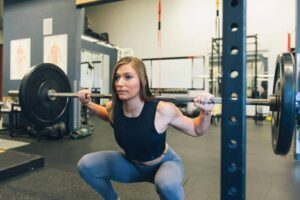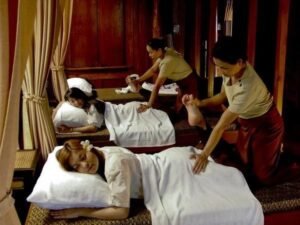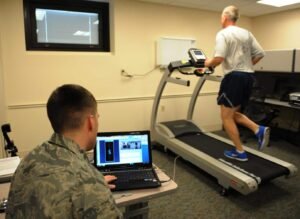Today, physiotherapy is not limited to different types of medical requirements and ailments. Sport is one of the most demanding professions that require a physiotherapist to recover from injury and also to prevent it also, you can read more about Pelvic Tilt. From shin splints, stress fractures to a knee injury, and muscle tear, different physiotherapy methods are used to assist in sports injury.
The article focuses on top physiotherapy techniques that are used in various sports.
Early Injury Treatment
The most common condition that leads to severe injuries in athletes or any sportsperson is the ignorance of early symptoms of the injury. It all starts with mild pain in various parts of the body. And the continuation of the intense exercises in that state leads to serious physical ailments.
Early injury treatment includes a lot of rest and application of ice or heat treatment on the affected area of the pain. Ice works best in reducing the pain and swelling of soft tissue injuries, whether it is ligament sprains, muscle tears, or bruising.
Biomechanical Analysis:
As the name suggests, Biomechanics is the study of human motion and helps in determining what causes an injury in a sportsperson. It also helps in preventing the injury from coming back using various physiotherapy methods.
There are different types of biomechanical analysis used by sports physiotherapists around the world. It includes video (motion capture analysis), running, and gait (walking pattern) analysis. It also includes sports biomechanics that includes sprinting, swimming, throwing, etc.
Joint Mobilization
Due to the rigorous training sessions and busy calendar year of the industrial athletes, there often come across a time when they feel chronic pain in their joints. The condition is common in sprinters, high-jumpers, and any sports that require intense pressure on the joints of our body, but usually the legs.
Joint mobilization focuses on attaining a standard range of pain-free joint motion and coordination of the tendons, joints, muscles, and ligaments. Gentle joint mobilization methods and mobility exercises such as Maitland, Mulligan, Kaltenborn, traction/distraction techniques help significantly in restoring the joint movement.
Strength Exercises:

Not only is strength exercise necessary for a sportsperson to enhance its performance in a crucial game, but it is also required to maintain perfect sync between different parts of the body. It is not limited to bulking up the muscles. It is an essential factor for a sportsperson as it involves power, endurance, the timing & balance of muscle contractions.
Strength exercises are usually divided into two categories that include stability muscle exercises and dynamic strengthening exercises. While stability muscle exercises include low intensity and high duration sessions, dynamic activities are high in power with shorter time duration.
Soft Tissue Massage Therapy:

One of the best physiotherapy techniques that are used as a relieve tension in the body after an intense physical session or a sports event. Soft tissue massage therapy involves direct action that targets the muscles, ligaments, and connecting tissues. It is comprised of different ranges of massage depths, pressures, and time durations.
Some sportsperson also prefers two other soft tissue techniques that include Swedish massage and deep tissue massage. Massage therapy also increases blood circulation, improves healing of muscular tissue, reduces inflammation of joints, decreases muscle spasm, and a lot more.
Stretching Exercises
For any sportsperson, a stretching session is essential for their muscles to elongate and its associated tendons. It later assists in normalizing the muscle length, and tension ratio as vigorous exercises shortens the muscles.
If you use a small amount of muscle length range, it is only a matter of time before your muscles adapt to new conditions and shorten to that length. Therefore, in any particular sports, sportspersons use various stretching methods to prepare for intense muscle activity.
Acupuncture Treatment
Acupuncture is a physiotherapy technique that is used in different sports to heal the side effects of an intense game caused on the ground. It is used to relieve tension, stress, and chronic pain from various areas of our body. It works on the Chinese principle that states that health is determined by a balanced flow of ‘chi,’ which is vital life energy that is present in all living organisms.
The technique involves the insertion of fine & sterile one-time-use needles at specific points in our body. It helps in redirecting the flow of the energy and thus helps in relieving the stress. Neck pain, back pain, knee pain, headaches, muscle, and joint pain are some of the areas where this method is applied.
Supportive Taping
Supportive taping is used to assist your muscle coordination and support the injury. You might have come across various athletes using the long straps on their ankle, knee, shoulder, wrist hamstring, and other places.
These strapping facilitates the de-loading of the painful areas and helps in the normal movement of your muscles and postural patterns. Rigid strapping, elastic strapping, and kinesiology tape are some of the tapes that are used in sports physiotherapy to assist in injuries.
Conclusion
Based on the type of sports injury, various other physiotherapy techniques are used in sports. It includes gait analysis, braces & support, Proprioception exercises, and many others. The article highlights some of the basic physiotherapy techniques that are used in various sports.


